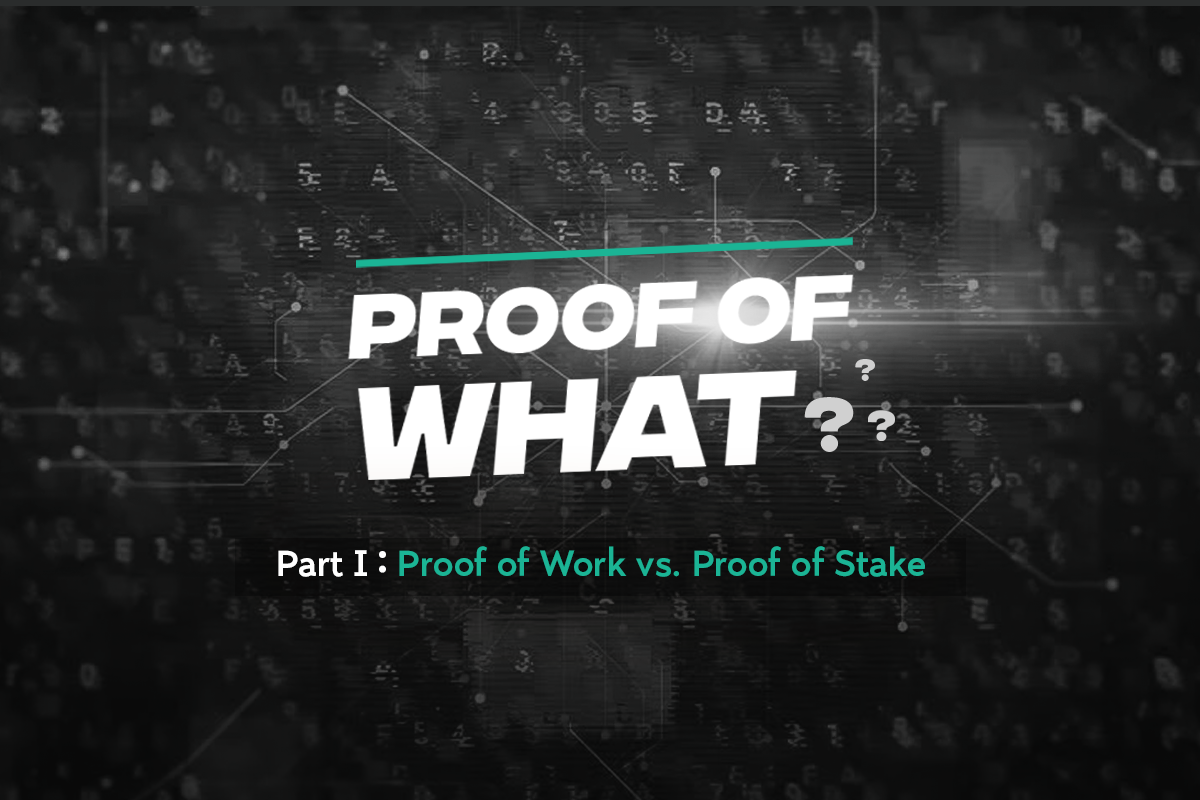When the original Bitcoin Whitepaper was released in October 2008 by Satoshi Nakamoto, Satoshi was introducing a chapter considering the proof-of-work. This proof-of-work represents a cryptographic puzzle which needs to be solved using pure computing power. Integrating this step as one of the steps too persistently write a block into the chain makes any change towards the chain that expensive, that in consequence it is impossible for any node in the chain to manipulate the chain in its favor. But as the proof-of-work needs to be expensive in terms of computing power and time, it does not come without disadvantages. As the time needed for solving the proof-of-work needs to be quite long, it is also limiting towards the throughput of transactions within the chain. Furthermore, the proof-of-work algorithm can be considered a waste of computing power and as a result a waste of energy. However, only one node can solve the proof-of-work, all other nodes participating the race for solving it can be seen as wasted computing power and energy.
Today – more that 13 years after the whitepaper was released – the proof-of-work is still the technology used within the Bitcoin Blockchain. But however, the limited transactional throughput and the long time needed to post a single transaction within the chain at peak times together with the tremendous amount of energy used, remains one of the biggest critics towards Bitcoin. This fact brought a lot of people to the point to work on alternatives.
The most prominent alternative towards the proof-of-work is the so-called proof-of-stake. This approach solves the problem of maintaining integrity in the chain, not by engaging all nodes into a race about solving a puzzle, but by selecting a single node called Validator to validate the transaction before writing them into the chain. After the transaction has been validated it is spread to all the other nodes participating the network. Those nodes are then in duty to proof that the transaction was validated correctly by the Validator. Nevertheless, the proof-of-stake is not selecting the Validator randomly. To be considered as a potential Validator a node needs to deposit an amount of stake in the chain. This stake will be frozen in chain and cannot be transferred as long it remains deposited. In case another node can proof that the validator has spread a malicious transaction he will receive a part of the stake of the validator as a reward. Otherwise, the Validator will be rewarded with a transaction fee which needs to be paid by the initiator of the transaction. By punishing the Validator, the proof-of-stake ensures that spreading a malicious node is not beneficial to the Validator. With regard towards the process of selecting a Validator it also needs to be mentioned that the probability of being selected increases linearly with the size of the deposited stake. As a result, nodes which can deposit a higher stake will be more often selected and therefore also more often rewarded.
The fact that smaller nodes would be rewarded much more seldom brought up a further variant of the proof-of-stake. Within this delegated-proof-of-stake all nodes can delegate their right of being the Validator to another node to increase the chance to be rewarded. The rewards earned as a gathered node is split in a weighted manner.
By selecting a distinct node to validate a single transaction a lot of computing power can be saved since only one node needs to provide the needed resources. This fact increases the throughput within the network, while having a much lower energy consumption. However, as no technical improvement comes without its downsides. The maybe biggest critics towards the proof-of-stake is that this algorithm will automatically lead into centralization. In comparison to the proof-of-work where a single entity needs to control 51% of the computing power competing to manipulate the chain, within a proof-of-stake network one entity needs to control 51% of the stake deposited. But as the frequency in which a node is selected as a Validator increases with the height of stake, the nodes which are already the closest ones to maintain 51% of stake, are more often rewarded and will get even closer to the 51%.
All in all, despite its problems the proof-of-stake remains a promising alternative towards the proof-of-work. Even though both concepts are having their downsides both will remain valid solutions for maintaining integrity in a distributed ledger. The decision about with technology to use will always depend upon the believe of the network and should be met in a distributed way.
